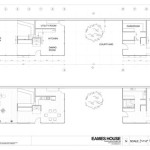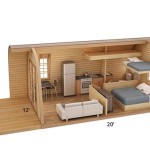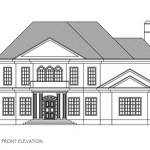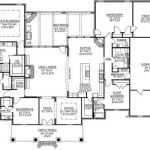Essential Aspects of House Roof Plans: A Comprehensive Guide
A well-designed roof is essential for protecting your home from the elements and ensuring its structural integrity. When planning the construction or renovation of a house, careful consideration must be given to the roof's design and features. This article provides an in-depth overview of the essential aspects of house roof plans to help you make informed decisions.
Understanding Roof Shapes and Structures
The shape and structure of the roof significantly impact its performance and aesthetics. Common roof shapes include:
- Gable Roof: Consists of two sloping sides meeting at a peak, providing ample attic space.
- Hipped Roof: Slopes down on all four sides, offering increased wind resistance.
- Flat Roof: Typically found in modern designs, with a low pitch or no slope.
- Gambrel Roof: Features two slopes on each side, resulting in a spacious attic.
Selecting Roofing Materials
The choice of roofing material is crucial for durability, energy efficiency, and curb appeal. Popular options include:
- Asphalt Shingles: Affordable and versatile, available in a wide range of colors and styles.
- Metal Roofing: Long-lasting and energy-efficient, but can be more expensive.
- Tile Roofing: Durable and fire-resistant, but heavy and requires expert installation.
- Slate Roofing: Prestigious and highly durable, but also costly and requires skilled labor.
Roof Pitch and Drainage
The pitch or slope of the roof determines its ability to shed water and snow. A steeper pitch allows for better drainage but can increase wind resistance. Proper drainage is essential to prevent leaks and water damage, achieved through gutters, downspouts, and flashing.
Ventilation and Insulation
Adequate ventilation is crucial for preventing moisture buildup and regulating attic temperatures. Proper insulation helps reduce energy costs and maintain a comfortable indoor environment. Roof vents and soffit vents ensure air circulation, while insulation materials such as fiberglass or cellulose provide thermal resistance.
Roofing Warranties and Inspection
Most roofing materials come with manufacturer warranties to protect against defects. It is essential to choose a reputable roofing contractor who offers comprehensive warranties and follows industry standards for installation. Regular roof inspections are recommended to identify potential issues and ensure the roof's continued performance.
Additional Considerations
In addition to the essential aspects mentioned above, other factors to consider when planning a roof include:
- Local Building Codes: Ensure the roof plan complies with specific requirements and regulations.
- Climate Conditions: Choose roofing materials and designs suitable for the local climate, considering factors such as wind, hail, and snow load.
- Aesthetics: The roof should complement the overall architectural style of the house.
- Cost: Determine the budget for the roof and consider ongoing maintenance costs.
Conclusion
A well-designed house roof plan is a crucial step in ensuring the safety, comfort, and longevity of your home. By considering the essential aspects outlined in this article, such as roof shapes, materials, pitch, drainage, ventilation, insulation, warranties, and additional factors, you can make informed decisions that meet your specific needs and create a durable and attractive roof system.

Roof Plans Google Search Roofingideas Truss Design Hip Building House Designs

Roofing Plan View Drawings Endo Truss

Small House Plans 18x21 3 Feet With One Bedroom Hip Roof Em 2024 D9c Detail Plan Cottage Style

Modern And Cool Shed Roof House Plans Houseplans Blog Com

Simple House Plans 6x7 With 2 Bedrooms Hip Roof Gable Construction Plan

Hip Roof House Plans Roofgenius Com

Tiny House Roof Plans Myoutdoorplans

What S Included In House Plans

House Plans Building And Free Floor From South Plan Of The Month September

Modern 2 Bedroom Erfly Roof Small House Plan Custom Blueprint Mcm








